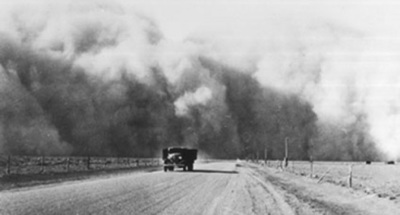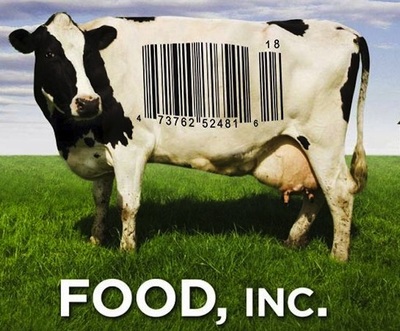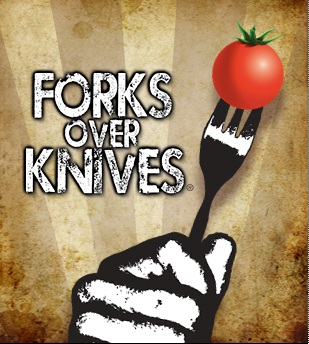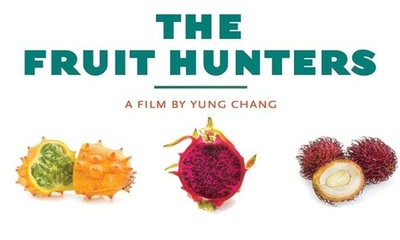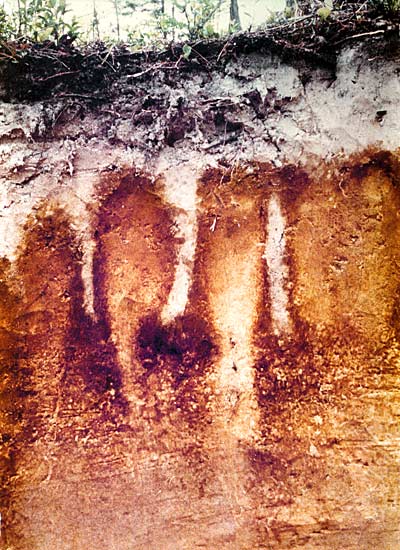 Did you know there are different types of soil? Obviously, there are sands and clays and potting mixes and top soils, etc. There are also different brands that sell soil in garden-supply stores. But there are actual named series of soils. Soil, in one place, can have overall properties that make it unique to soil from other areas. Some soil is good for growing cotton, some soil is good for specific trees, some soil is good for root crops, etc. Now here's something you can 'wow' them with at your next cocktail party: Michigan actually has an official state soil! It’s called Kalkaska sand. In the 1970s, scientists began sifting through (ha!) over 400 different types of Michigan soil in order to come up with the one that best represents our state. Some of the things they considered: Widespread presence (Kalkaska sand covers over a million acres across both the upper and lower peninsulas), whether it supports a common state crop (trees grow well in Kalkaska; lumber is a state industry), and even physical appearance (it’s a beautiful reddish brown). After many years of deliberation, they concluded that Kalkaska sand won out over the other candidates, and in 1991, over 150 conservationists, environmentalists and government leaders gathered in Kalkaska County to dedicate the newly-designated state soil. A little bit about our state soil: Kalkaska sand is a multi-layer soil composed of humus, light sand, dark sand, and yellowish sand. As you dig down into the Kalkaska soil, distinctive layers can range from very dark to yellowish-brown and are commonly 2 to 4 feet deep. Kalkaska sand is a well-drained soil and can very effectively filter water. This makes it a valuable asset in forestry. It’s also the reason lakes and rivers located in areas of the state where Kalkaska sand is abundant are so darn clean. While it’s not found in west Michigan south of Manistee, nor is it very good for lawns and gardens, it just goes to show that soil is so unique and diverse– and important– that states and scientists will go out of their way to actually recognize and celebrate it. We should too! It’s fragile and critical to our food and water supply. Don't just call it “dirt.” It’s soil-- and if we don’t have healthy soil, there’s no hope for us to be healthy either.
0 Comments
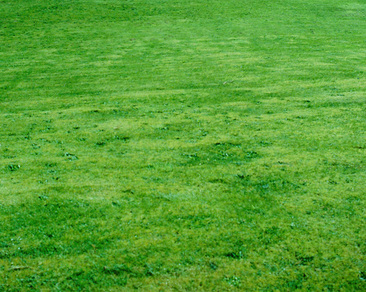 Our lawns are about as unnatural an ecosystem as you're ever going to find. And by "unnatural," I mean you're just not going to find anything similar anywhere in nature. Tell me where you're going to find several thousand square feet of Kentucky Bluegrass, neatly contained with sharp edges, kept at a length of 2-3 inches at all times, with no other vegetation allowed to penetrate the borders. Short answer: No where! Not in the woods, not in the rain forest, not in the desert, not in the tropics, not even on the prairie. Oh sure, there are pastures, where animals graze on grass, but there's nothing quite like a lawn anywhere outside our yards. It's entirely a man-made construct. Lawns as we know them-- closely-cut areas of grass-- first emerged in 17th century England, where they were a status symbol of the aristrocracy. The nobility could show off that they could afford land that contained neither buildings nor food. The lawn was born as a recreational area, which is what remains today. Sort of a shag carpeting for outdoor living. But no matter how you slice it, it ain't natural. Now don't get me wrong, I enjoy having a lush green lawn as much as the next All-American homeowner, but the standards we have set for our lawns have become nearly unsustainable. Anything less than a uniform blanket of perfectly green grass blades is seen as an ugly failure. And that's why we've become so reliant on chemicals. If it's not brilliantly green from April until November? Failure. If clover appears? Failure. If success isn't instant? Failure. But those chemical fertilizers, are actually killing your yard's plant life because those chemicals are killing the microorganisms and fungi and bugs in your soil. Those critters are vital to a healthy ecosystem. Our planet thrived because of those critters long before chemical fertilizers arrived on the scene. Not putting those chemicals on your lawn this year would be the first step toward restoring life to your soil. But here's the thing: Just stopping the chemicals won't necessarily give you society's version of a perfect lawn. Why? Because lawns require a lot of nutrients, and they take a lot of abuse from foot traffic and pets and mother nature (winters, droughts, etc). Those nasty chemical fertilizers are one option to give your lawn the nutrients it needs, but as I said, the chemicals actually do more damage than good. They weaken the roots, they compact the soil, they cause thatch, they cause your lawn to become chemically dependent, they pollute the environment and can make you and your pets sick. So while getting rid of the chemicals will slowly allow those vital microorganisms to return to your soil, there probably will never be enough of them naturally-occurring in your soil to give you that "wow" lawn. So what do we do at Good Sweet Earth to make our lawn look great, without adding chemicals to it? We apply Worm Tea as an organic microbial soil drench-- Worm Tea has billions of those beneficial microorganisms and fungi living and breathing in one teaspoonful. Imagine what regularly applying Worm Tea to your yard could do for your soil! It could increase the amount of those wonderful microorganisms a thousandfold, or more, in just one season of regular applications! And why is that important? Because those microorganisms break down organic matter in lawn-- clippings, leaves, worm castings, compost-- and release nutrients into your soil for your lawn to soak up. Worm Tea is like delivering billions of nutrient factories straight to your lawn. So to reiterate: those microorganisms will always exist in a chemical-free lawn, but there probably won't ever be enough to sustain a truly healthy lawn all year. To get that healthy lawn, you need healthy soil, and to get soil healthy and nutrient-rich enough to sustain a beautiful lawn, you need to infuse it with more microorganisms! Worm Tea does it. Contact us if you're interested in infusing your soil with billions of those wonderful nutrient factories this year, or read more about what it can do for your lawn. 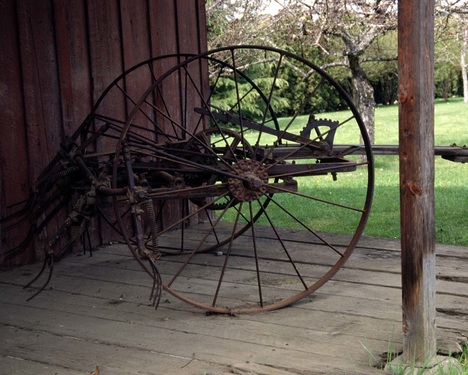 When I think of farmers of the 19th and early-20th centuries, I think of simple, honest, noble and humble people. When I think of farmers of the late 20th and 21st centuries, one of the first thing that pops into many people's heads are chemical-spewing, soil-destroying, government-lobbying, labor-abusing corporate farming businessmen. Now don't get me wrong, I know there are still family farmers working the land the correct way-- right here in west Michigan-- but for the most part, we have corporations playing the role of "farmer" in America today. Tens of thousands of acres, producing crops that we don't really need, with genetically-modified seeds, using chemicals that are bad for the environment, and killing pests and diseases that only exist because they've destroyed the natural order of things. And then there's Monsanto-- a seed company that actually forbids farmers from collecting and saving their seeds for the next year. A company that sues farmers when "their" seeds blow from one farm to another. This is just the epitome of arrogant human behavior. And these practices are destroying our farms and our soil. Soil, mind you, that took up to 1,000 years to develop. Soil, that once it's wiped out, is gone for good. This "money first" approach to farming is the total opposite of the image of the humble farmer-- being a steward of the land, working his or her soil with care and compassion. And you know what? Humility and farming should go hand-in-hand. The word humility actually derives from the word humus-- which is soil. The Latin noun humilis means "grounded" or "from the earth." So that's how we need to approach farming and gardening-- with humility. That means before we enjoy the flowers, or bite into those strawberries, or share our abundance of zucchini with the neighbors, we need to do right by our soil. We need to humbly approach our gardens, and realize that good crops don't come from a bottle or a chemical lab. Good crops come from good soil. That means no synthetic chemical fertilizers. They kill the microorganisms that our plants need to survive and thrive. Humble farmers for thousands of years provided nutrients to their crops by way of compost. We should too. That means no synthetic chemical pesticides. Humble farmers for thousands of years dealt with pesky and destructive pests without chemicals. We should too. There are always organic ways. That means no synthetic chemical herbicides. Humble farmers for thousands of years dealt with weeds by picking them and by having healthy soil. We should too. That means using compost, peat, Biochar, Worm Compost, clean soil, ground up egg shells, coconut coir to condition the soil and provide water retention and aeration. If you're going to be a gardener, if you're going to be an urban or suburban farmer, focus on the soil, be grounded, be mindful of the earth in which you're sowing your seeds. Humility-- it's really understanding that humans don't always do things better than the rest of creation. If you’re ready to have your mind blown when it comes to farming and food– or if you’re ready to get a friend or relative on-board with organic and sustainable farming– here are five fantastic movies that we at Good Sweet Earth can’t speak highly enough about. They’re inspiring, educational, informative, and even entertaining.
After seeing these films, you’ll want to sink your hands into some rich, crumbly dirt; sink your teeth into some garden-fresh fruits; and sink the notion that corporate farming is really “no big deal.” All five of these films are available on DVD/Blu-Ray, and most are on streaming services like Amazon Prime and Netflix as well. 1. Food, Inc.In Food, Inc., filmmaker Robert Kenner lifts the veil on our nation’s food industry, exposing the highly mechanized underbelly that has been hidden from the American consumer with the consent of our government’s regulatory agencies, USDA and FDA. Our nation’s food supply is now controlled by a handful of corporations that often put profit ahead of consumer health, the livelihood of the American farmer, the safety of workers and our own environment. We have bigger-breasted chickens, the perfect pork chop, herbicide-resistant soybean seeds, even tomatoes that won’t go bad, but we also have new strains of E. coli—the harmful bacteria that causes illness for an estimated 73,000 Americans annually. We are riddled with widespread obesity, particularly among children, and an epidemic level of diabetes among adults. Featuring interviews with such experts as Eric Schlosser (Fast Food Nation), Michael Pollan (The Omnivore’s Dilemma, In Defense of Food: An Eater’s Manifesto) along with forward thinking social entrepreneurs like Stonyfield’s Gary Hirshberg and Polyface Farms’ Joel Salatin, Food, Inc. reveals surprising—and often shocking truths—about what we eat, how it’s produced, who we have become as a nation and where we are going from here. 2. Dirt! The Movie. Dirt! The Movie is an insightful and timely film that tells the story of the glorious and unappreciated material beneath our feet. Inspired by William Bryant Logan’s acclaimed book Dirt: The Ecstatic Skin of the Earth, Dirt! The Movie takes a humorous and substantial look into the history and current state of the living organic matter that we come from and will later return to. Dirt! The Movie will make you want to get dirty. 3. Forks Over Knives. Forks Over Knives examines the profound claim that most, if not all, of the degenerative diseases that afflict us can be controlled, or even reversed, by rejecting our present menu of animal-based and processed foods. The major storyline in the film traces the personal journeys of a pair of pioneering yet under-appreciated researchers, Dr. T. Colin Campbell and Dr. Caldwell Esselstyn. The idea of food as medicine is put to the test. Throughout the film, cameras follow “reality patients” who have chronic conditions from heart disease to diabetes. Doctors teach these patients how to adopt a whole-foods plant-based diet as the primary approach to treat their ailments—while the challenges and triumphs of their journeys are revealed. 4. The Dust Bowl: A Film by Ken Burns. The Dust Bowl chronicles the worst man-made ecological disaster in American history, in which the frenzied wheat boom of the “Great Plow-Up,” followed by a decade-long drought during the 1930s nearly swept away the breadbasket of the nation. Vivid interviews with twenty-six survivors of those hard times, combined with dramatic photographs and seldom seen movie footage, bring to life stories of incredible human suffering and equally incredible human perseverance. It is also a morality tale about our relationship to the land that sustains us—a lesson we ignore at our peril. 5. The Fruit Hunters. You can find them deep in the jungles of Borneo, in the hills of Umbria and perhaps even in your own backyard. They are fruit hunters, the subjects of the new film from acclaimed director Yung Chang (Up the Yangtze, China Heavyweight). The Fruit Hunters travels across culture, history and geography to show how intertwined we are with the fruits we eat. Our guides are devoted fruit fanatics. Movie star Bill Pullman’s obsession leads him on a crusade to create a community orchard in the Hollywood Hills. Adventurers Noris Ledesma and Richard Campbell scour the jungle for rare mangos, hoping to intervene before the plants are steamrolled by industrialization. Pioneering scientist Juan Aguilar races to breed bananas resistant to a deadly fungus that threatens the worldwide crop. And fruit detectives including Isabella Dalla Ragione investigate Renaissance-era paintings for clues, hoping to rediscover lost fruits. And, of course, there are the fruits themselves, presented in all their mouthwatering glory: cherimoyas, ice cream beans, durians and more. |


